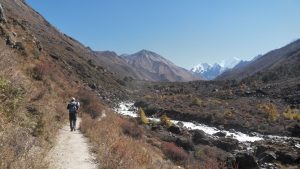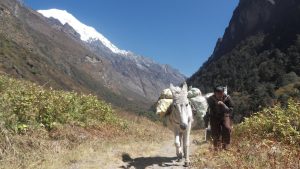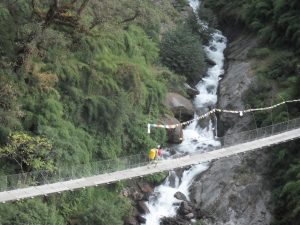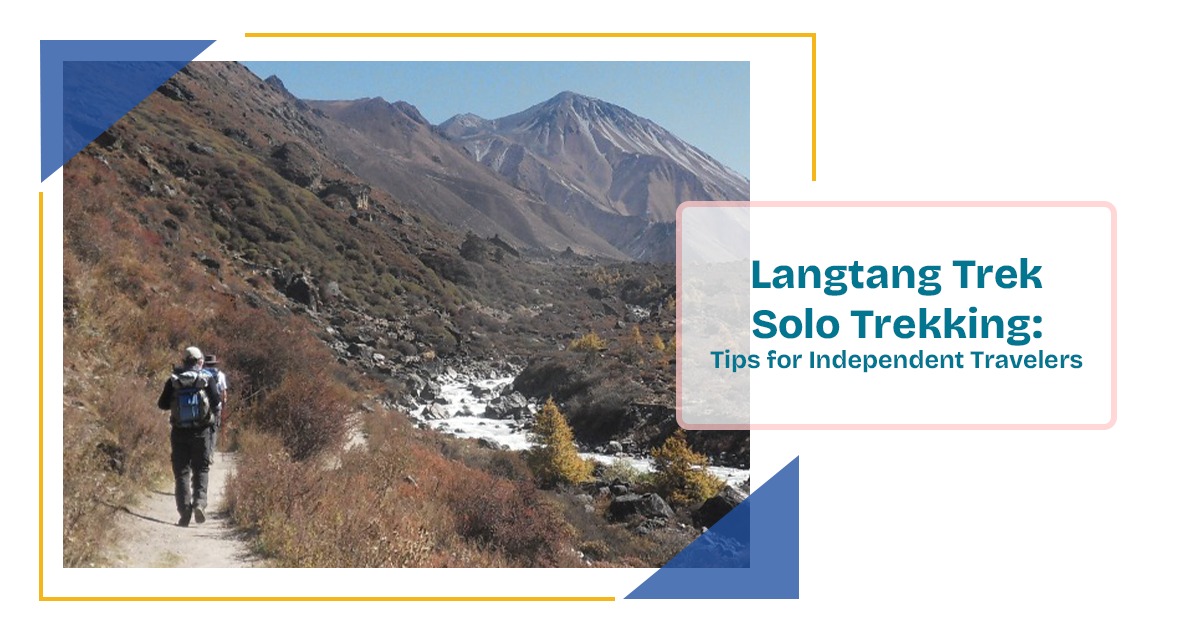Langtang Trek Solo Trekking: Tips for Independent Travelers
The Langtang Trek is one of the savagely beautiful trekking routes in Nepal who most people don’t know about. It is perfect for those in search of a place to spend some time alone in adventure, the route offers breathtaking sceneries, diverse Tamang culture and relatively milder crowds compared to Everest or Annapurna regions. But is solo trekking in Langtang a good idea? Without a doubt. As long as you are adequately prepared.
In this guide, we will provide important considerations for solo trekkers while explaining everything there is to know about Langtang Trek Nepal including Langtang Trek itinerary, costs, altitude, safety, among others.
Why Choose Langtang Trek for Solo Trekking?
Experience the Himalayas in their raw form with Langtang Valley Trek, unlike the commercialized trekking routes. Trekkers are greeted with warm hospitality after Langtang village and its residents empathically recovered from the destruction brought by the 2015 earthquake.
Benefits of Solo Trekking in Langtang:
- Flexible Langtang Trek itinerary.
- Better self Reflection along the peaceful trails.
- Easier logistics than Everest or Annapurna treks.
- Close interaction with locals.
- Budget-friendly Langtang valley trek cost.
You can check our product page where we have very detailed and properly managed Magical Langtang Trek package.

Solo trekker trekking during Langtang Trek
Essential Tips for Solo Trekkers on Langtang Trek
1. Plan Your Langtang Trek Itinerary Well
Usually, one complete Langtang Valley Trek itinerary takes from 7 to 10 days. As a solo trekker, feel free to adjust your pace, but make sure you have a plan:
- Day 1-2: Drive Kathmandu to Syabrubesi, then Trek towards Lama Hotel.
- Day 3-4: Trek towards Langtang village and Kyanjin Gompa.
- Day 5-6: Hike 4,984m Tserko Ri for panoramic views.
- Day 7-8: Trek back to Syabrubesi.
You can also combine the Langtang Gosaikunda Trek if you want additional thrill.
2. Be Aware of Langtang Trek Altitude
Langtang Trek begins in Kathmandu which lays 1,400m, and includes Tserko Ri sitting at approximately 5,000m, therefore, exposing trekkers to the risk of altitude sickness.
- Avoid skipping rest days.
- Recognizing AMS symptoms like blurry vision, headaches, and nausea is crucial.
Headaches and Nausea are some of the AMS symptoms trekkers should recognize to protect themselves.
3. Budgeting: Understand Langtang Valley Trek Cost
Guiding and portaging costs can be avoided by solo trekking, but some expenses need to be planned for:
- Transport (bus/jeep to Syabrubesi): NPR 1,500 – 2,500.
- Permits: TIMS card & Langtang National Park Entry (~NPR 3,000 total).
- Food & Accommodation: NPR 2,000 – 3,500 per day.
With all calculations done, the total expenses for each week-long trek sit between NPR 25,000 – 40,000.

Porter and Horse carrying goods during Langtang Trek
4. Navigation & Connectivity
- Some areas have an NTC network, but it is patchy.
- Always carry a map or offline GPS even though the trails are clearly marked.
- Trust locals and share your trekking schedule with them. Discuss your plans with them every day.
5. Safety Tips for Solo Trekking
- Take a local’s SIM card or an emergency satellite tracker.
- Avoid afternoon weather conditions by starting your trek early.
- Stick to main trails; avoid risky shortcuts.
- Ask every teahouse about trail conditions.
- Always have a whistle, flashlight, and basic first-aid supplies.
6. Respect Local Culture in Langtang Village
The Tamang culture is vibrant. As a solo trekker, you’ll have direct interaction:
- Greet locals with “Namaste”.
- Respect monasteries & stupas.
- Support local teahouses.
Best Time for Solo Langtang Trekking
- Spring (March-May): Rhododendrons in bloom, clear skies.
- Autumn (Sept-Nov): Best weather, peak season.
- Winter & monsoon trekking is possible but requires extra caution.
Also check our Nepal product category page to explore wide range of trekking and tours packages available with us.
Langtang Trek Difficulty: Can Beginners Do It Solo?
The Langtang Trek Nepal is considered a moderate trek. While the routes are less complicated than those of Everest Base Camp, physically solo trekking remains a challenge.
Factors Affecting Difficulty:
- Steep ascents & descents (especially before Langtang village)
- High altitude (Tserko Ri nearly 5,000m)
- Weather unpredictability in higher regions
- Self-sufficiency (no guide/porter support)
Verdict:
If you’re reasonably fit and have done long hikes before, you can definitely attempt the Langtang Trek solo.
Beginners should consider hiring a guide for safety.

Bridge on the way in Langtang Trek
Langtang Trek Nepal After Earthquake: 2025 Update
Langtang village was almost completely wiped out after the earthquake in 2015. The community, though, has bounced back in quite an inspiring way.
Current Highlights:
- Rebuilt teahouses & guesthouses with better facilities
- Improved trail maintenance with clear signage
- Active local support networks for trekkers
- Stronger tourism infrastructure through community projects
Your trip goes a long way in sustaining local economies and helps promote responsible tourism in the Langtang area.
Langtang Trek Nepal: Quick Facts
Feature | Details |
Trek Name | Langtang Trek Nepal |
Region | Langtang National Park, Rasuwa District |
Starting Point | Syabrubesi |
Ending Point | Syabrubesi / Gosaikunda (optional extension) |
Max Altitude | Tserko Ri (4,984m) |
Trek Duration | 7-10 Days (Langtang Valley Trek itinerary) |
Difficulty Level | Moderate |
Trek Type | Teahouse/Lodge Trekking |
Best Seasons | March-May & September-November |
Permits Required | TIMS Card & Langtang National Park Permit |
Also read our latest blog on High Altitude Sickness in Nepal Himalayas.
Final Thoughts: Solo Trekking in Langtang is Worth It!
The Langtang Trek is one of the very few treks in Nepal which a solo traveler can undertake without any hassle since it includes everything from stunning views, crawling into the exotic culture of the people living in the region, and offers peaceful trekking far away from the commercialized crowds. Most importantly, It has reasonable altitude and supportive local people which makes it an ideal trek in Nepal.
Solo trekking means great freedom, self-dependability and the opportunity to set your own pace. People who prefer trekking or traveling solo need to be responsible, respectful towards nature, and plan well in advance.
No matter if you are seeking easy trek in Nepal, adventure trekking or cultural blend of it all; Let Red Reach Himalaya guide you on your trip.
Contact Red Reach Himalaya today and let us create your customized trekking itinerary — safe, scenic, and soul-nourishing.
FAQs on Solo Trekking in Langtang Trek
1. Is it safe to do the Langtang Trek solo?
Yes, it’s considered safe for solo trekkers. However, always be cautious, follow marked trails, and inform locals about your route.
2. Can I find accommodation easily during Langtang Valley Trek?
Yes, plenty of teahouses are available in Langtang village, Lama Hotel, and Kyanjin Gompa. Solo trekkers can easily get a room even in peak seasons.
3. What’s the main challenge of Langtang Trek solo trekking?
Managing altitude, navigation in foggy weather, and carrying personal load are the main challenges. However, it’s manageable with proper preparation.
4. Can I combine Langtang Valley Trek with Gosaikunda Lake?
Yes, the Langtang Gosaikunda Trek is a popular extension. It adds 3-4 days but offers spiritual lakes and higher mountain passes.











